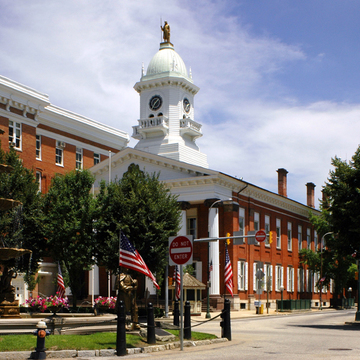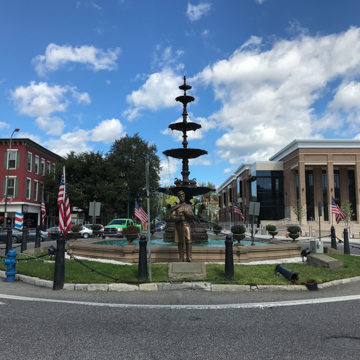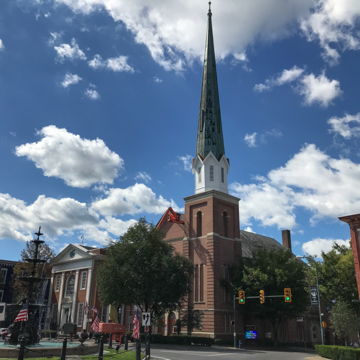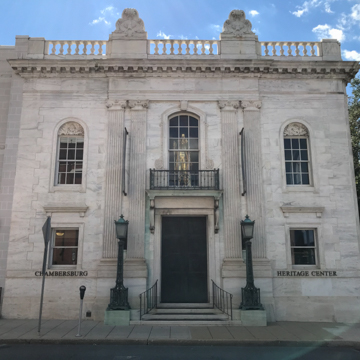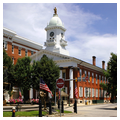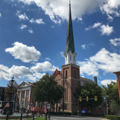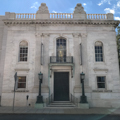Chambersburg's heart, like most of eastern Pennsylvania's county towns, is its town square. Laid out by Benjamin Chambers as the center of the village that was originally known as Falling Spring, it is now immersed in a confusing sea of traffic that swirls around a central fountain. The fountain was constructed as a Civil War memorial from pieces cast by J. W. Fiske of New York and assembled by the Variety Iron Works in nearby York. It was dedicated in July 1878 after the town's Civil War destruction had largely been repaired. The twin spires of Central Presbyterian Church (40 Lincoln Way W) betray the German-based Gothic Revival of Stephen D. Button's 1868 design, though the church was refaced and altered twice in the twentieth century to push its detail and brickwork toward the colonial. Other key buildings include the early-twentieth-century Farmers and Merchants Trust on the square's southeast corner, and facing Main Street is a late Furness, Evans and Co., design for the Valley National Bank in white Vermont marble that perhaps reflects the original scheme for Philadelphia's Girard Trust Company (PH53) before it was revised toward its great domed form. Here there are references to Victorian schematization of classical detail, making it clear that this is not the standard Beaux-Arts. The bank building has recently been adapted as the Chambersburg Heritage Center.
You are here
Town Square
If SAH Archipedia has been useful to you, please consider supporting it.
SAH Archipedia tells the story of the United States through its buildings, landscapes, and cities. This freely available resource empowers the public with authoritative knowledge that deepens their understanding and appreciation of the built environment. But the Society of Architectural Historians, which created SAH Archipedia with University of Virginia Press, needs your support to maintain the high-caliber research, writing, photography, cartography, editing, design, and programming that make SAH Archipedia a trusted online resource available to all who value the history of place, heritage tourism, and learning.


